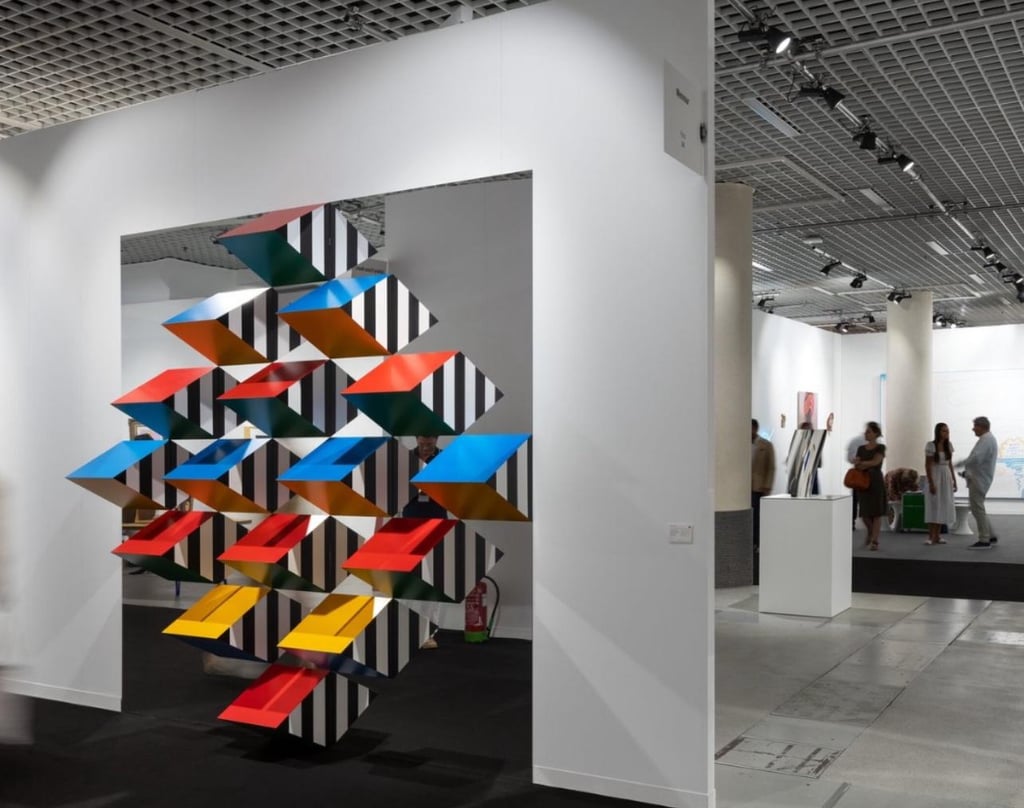A Glimpse into Art Monte-Carlo 2025
Set against the glittering backdrop of the French Riviera, Art Monte-Carlo 2025 emerges once again as a sanctuary for refined sensibilities and intimate encounters with contemporary art. Far from the frenzy of the global circuit, this edition affirms its unique ability to create suspended moments—where silence, light, and gesture converge in a choreography of understated brilliance. Here, art is not merely shown, but savored: quietly, thoughtfully, almost as if time itself slows down to listen.
TODAY'S HEADLINER
Charlotte Madeleine CASTELLI
7/10/20254 min read


Whispers of Elegance
Art Monte-Carlo 2025 once again distinguished itself for its ability to offer intimate, meditatively calibrated experiences within a context that seems to exist outside of time. Among the works that struck me most for their silent force, a small object, almost overlooked at the edge of a boothcaptured my attention like an enchanted whisper: a bronze snail inlaid with white sapphires, a delicate piece by Kiki Smith, presented by Timothy Taylor Gallery. Barely over seven centimeters in length, this miniature marvel encapsulates the entire imaginative cosmos of its maker.
She is an artist who has long transformed the human, animal, and celestial body into a threshold , a liminal territory where metaphor and flesh intertwine: from the visceral intensity of her early anatomical sculptures to the celestial maps and constellations of her more recent works, Smith’s journey is one of elemental storytelling. And so, this snail, seemingly minor in scale, proves to be deeply aligned with her poetic language. It moves slowly, bearing precious stones like relics. It is fragile yet determined — much like the female figures that populate her universe: the reclining Mary Magdalene in fiberglass, or the hybrid Harpies that defy all biological and moral binaries.
Within this snail lies the same tension between vulnerability and resilience that animates pieces such as Lilith, suspended, weightless, challenging gravity, or Spiral Nebula, where matter seems to swirl toward the unknown. But here, everything condenses: this work is not monumental but almost jewel-like in gesture. The choice of white sapphire is more than aesthetic; it acts as a quiet light, as though the creature’s shell carries a hidden galaxy within. The animal’s slowness becomes a form of resistance to time... an ode to duration, erosion, and transformation.
Though modest in scale, this sculpture finds its place in the intimate lineage of the artist. It feels as though Smith wished to remind us that even that which crawls holds its own sanctity — that the humblest creatures may shine with their own light. It is not a provocation, nor a decorative whim: it is a cosmic murmur, a quietly resonant object speaking of cycles, of the feminine, of refuge, and of the interior voyage.
In a context like Art Monte-Carlo, where the market occasionally overshadows the message, this small sculpture managed to disarm the urgency of spectacle. For those who knew how to listen, it spoke directly to that part of collecting that still knows how to be moved by detail, by a work that doesn’t impose itself but endures. And perhaps that is precisely Kiki Smith’s gift: to remind us that the most powerful art is often the one that whispers.
Wandering through the booths of the Grimaldi Forum felt like engaging in an intimate conversation with contemporary collecting—one that knows when to be silent, and when to strike with surgical precision.
Held under the High Patronage of Prince Albert II, the fair reaffirmed its position as one of the most sophisticated platforms in the Mediterranean art world. Selective by design, with just twenty-five invited galleries, it represented a curatorial statement in itself: here, quantity gives way to quality, to precision, to intention. The international reach was palpable: among the most striking presences were Almine Rech, Franco Noero, Pace Gallery, and Van de Weghe, along with others such as Cortesi Gallery and Moretti Fine Art, which masterfully bridge the ancient and the contemporary.
What impressed me most, above all, was the way Art Monte-Carlo enabled dialogue between seemingly disparate worlds. Pierre Yovanovitch, interior designer, conceived an installation that flowed seamlessly in and out of the exhibition space — a visual syntax oscillating between rigor and theatricality, between wall-based art and art to be lived. Equally remarkable was the contribution of the Centre Pompidou, which offered a conceptual counterpoint to the Riviera’s sunlit brilliance through a focus on colour as a curatorial theme.
Sales were discrete yet meaningful, as is the fair’s signature style. I heard of a sculpture by Chiharu Shiota sold at Galerie Templon for approximately €65,000, a confirmation that the market present was the right one: refined, quiet, and fluid. There was a delicate tension between craftsmanship and curatorial intelligence, between the cult of the object and the lightness of those who know how to inhabit the ephemeral. One especially poetic moment? A micro-exhibition aboard a yacht moored near the Forum, where the sound of the sea blended with slow-motion video art and blown glass catching the ripple of Mediterranean light. An absolute gem.
And as the doors of the fair opened, came the silent yet decisive announcement: Informa Prestige, the group behind the Monaco Yacht Show, had officially acquired Art Monte-Carlo. A move that quietly signals a future where art, design, and luxury might intertwine in increasingly structured, hybrid, and immersive forms.
This fair is not merely an exhibition platform. It is a temporal gesture, a slow ritual of aesthetics. A place where Monaco is not just a backdrop but a substance. Where collecting is not trend-driven, but visionary. And where the curator, if they listen closely enough, can still find space for silence, detail, and slowness. Like chamber music, it doesn’t require an orchestra — just a quartet in perfect accord.
Art Monte-Carlo 2025 does not need to shout to be remembered. It leaves instead a trace — elegant, subtle — in the curated landscape of memory, reminding us that the future might just lie in these small, thoughtful, intentionally crafted fairs. Built for the few, but capable of saying everything.
© Charlotte Madeleine Castelli | All rights reserved
